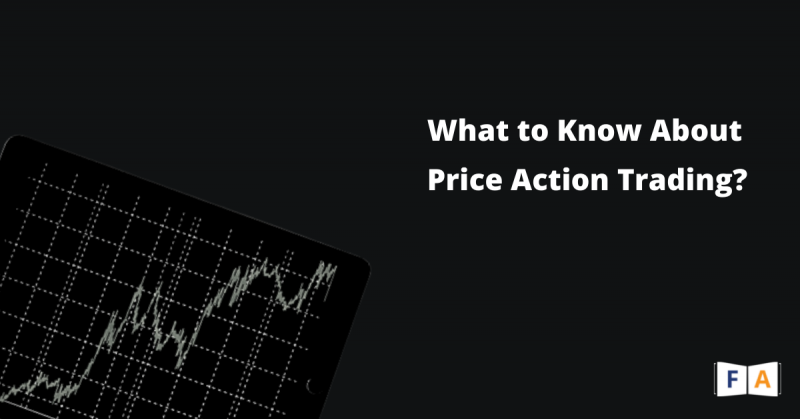
What to Know About Price Action Trading?
P.A.T. (Price Action Trading)
is the practice of basing all of your trading decisions on a “naked” or stripped-down price chart. Other than a pair of moving averages to help identify dynamic support and resistance areas as well as the trend, there will be no trailing indicators.
Data on a market’s price movement over multiple time periods is generated by all financial markets and displayed on price charts. Price charts reflect the views and behaviours of all market participants (human and machine) over a while, and these beliefs are displayed on a market’s price chart as “price action” (P.A.).
While economic statistics and other global news events are important drivers of market price movement, we don’t need to study them to trade profitably. The explanation is straightforward: all economic data and world news that drives price movement within a market is eventually reflected on the market’s price chart via P.A.
Because a market’s P.A. reflects all aspects affecting that market for any given period of time, using lagging price indicators like stochastics, MACD, RSI, and others is a waste of time. Price movement provides all of the indicators you’ll ever need to build a lucrative and high-probability trading strategy.
So, how can we trade using price action?
Understanding how to trade P.A. setups or patterns from market confluent levels boils down to this. Now, if any of this seems foreign or perplexing to you at this time, please bear with me and I’ll explain everything quickly. First, let’s go over a few more details:
Due to the repetitive nature of market actors and the way they react to global economic variables, the P.A. of a market tends to repeat itself in a variety of ways. Price action trading techniques are another name for these patterns, and there are several Price Action Trading Strategies that can be traded in a variety of ways.
These recurrent price patterns, often known as price action setups, indicate whether market sentiment is changing or staying the same. To put it another way, learning to recognize price movement patterns may provide “clues” as to where a market’s price will go next.
It would be beneficial to go through some common price action trading ideas. The first is to take advantage of the trend after entering a retracement. This is a simple price action strategy in which the trader just follows the existing trend. If a price is obviously decreasing and lower highs are being set on a regular basis, a trader may consider taking a short position. The trader may choose to enter the market if prices are progressively rising, with higher highs and lows.
After that, there’s the trend following the breakthrough entry. This pattern follows any significant market movements, anticipating that a price increase would be followed by a price decline. When a market moves outside of a defined support or resistance line, it is called a breakout.
Traders can take a long position or a short position if the stock rises above the resistance line or falls below the support line, using this as a signal to act.
Another popular approach is the Head and Shoulders reversal.
As the name implies, the head and shoulders pattern is a market movement that mimics the silhouette of a head and shoulders. To put it another way, prices rise, fall, rise again, fall, and then soar to a lower high before descending somewhat. Because it’s easy to identify an entry position (typically just after the first shoulder) and a stop loss (usually after the second shoulder) to benefit from a temporary peak, the head and shoulders reversal trade is one of the most popular price action trading systems (the head).
Lastly is the sequence of highs and lows. Price Action Trading is essentially a game of highs and lows. Traders that trade price action might use the sequence of highs and lows technique to identify emerging market trends.
For instance, if a price is trading at greater highs and lower lows, it is indicating an upward trend. It’s moving downhill if it’s trading at lower highs and lows. Traders can choose an entry point at the lower end of an upward trend and set a stop immediately before the preceding higher low by using their knowledge of the sequence of highs and lows.
Learn from Finlearn Academy’s course on the same for the best benefits.





